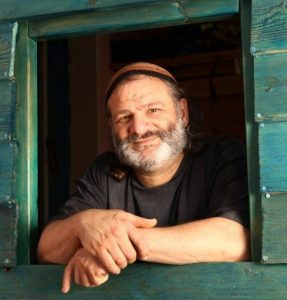Precise optical components are vital for many fields including medical imaging, fiber optics, lasers, microscopy, telescopy, lithography, and holographic lighting and more. In the field of bioengineering, they are crucial for 3D microscopy – but their production is extremely challenging.
The precision required in the manufacturing process of diffractive optical elements (DOEs) is on the nanometric scale (one millionth of a millimeter), so it is complicated, requires high precision and can be done only in a “clean room” – factors that make it expensive.
Scientists at the Technion-Israel Institute of Technology in Haifa have now dramatically improved and simplified the production of manufacturing precise optical components by immersing them in liquid. The study, led by doctoral student Reut Orange-Kedem and Prof.Yoav Shechtman from the Technion’s Faculty of Bioengineering, was published in the journal Nature Communications under the title “3D printable diffractive optical elements by liquid immersion.”
Shechtman is also a member of the Technion’s Russell Berrie Nanotechnology Institute and the Lorry I. Lokey Interdisciplinary Center for Life Sciences & Engineering, while Orange-Kedem is a Ph.D. student under his supervision.
The scientists developed an innovative process of manufacturing these elements that significantly simplifies the production, enabling optical components to be made using a regular 3D printer. This method makes optical components fast and inexpensive to create and also makes it possible to increase the complexity of the elements produced – and all this without minimizing precision.
To achieve this, the scientists immersed the optical component in liquid – a mix of water and glycerol (a cheap substance widely used across industries, including as a food additive). Light moves at different speeds through different substances. For example, it slows down when passing through water or glass. This difference in speed is called the material’s refractive index, and the refractive index of the liquid the scientists used is very close to that of their optical component.
Under those conditions, the optical component needs to be 1,000 times larger to function, which is just what the scientists wanted. Being larger, the component is now much easier to produce and much less sensitive to manufacturing errors. Instead of a lengthy and complex process requiring a cleanroom, it can now be manufactured using a regular 3D printer.
The simplicity of the process also allows for the production of more complex components that were nearly impossible using traditional methods. In addition, the novel components are also tuneable, unlike their traditional predecessors, through manipulation of the glycerol concentration. Overall, the Technion team said this is an achievement in optics that puts a better and cheaper tool into the hands of scientists and industries across multiple fields.
The shortcode is missing a valid Donation Form ID attribute.



